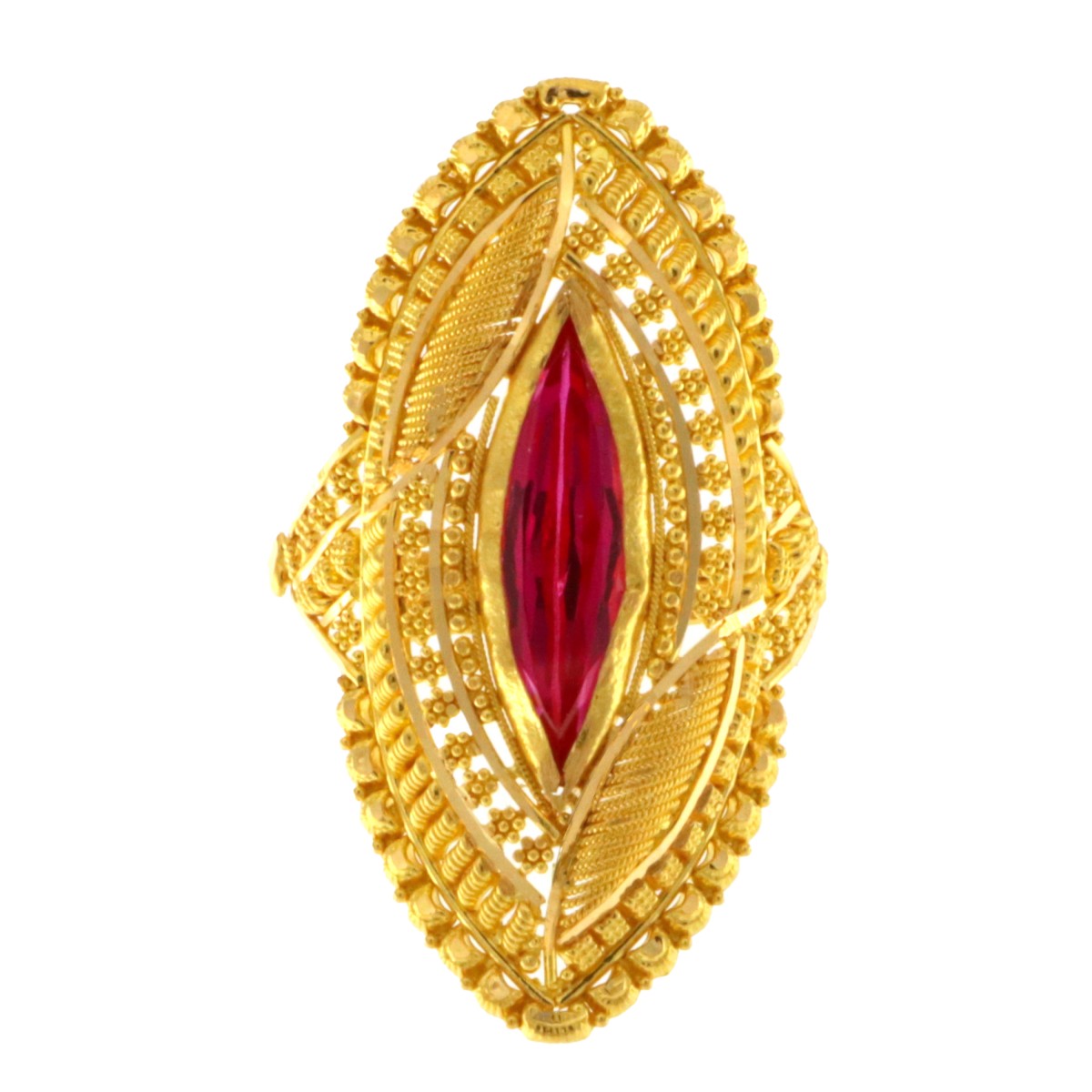Indian Gold Engagement Rings: Timeless Beauty for Your Special Day

Gold has been a symbol of prosperity, luxury, and timeless beauty in Indian culture for centuries. Among the various forms of gold jewellery, indian gold engagement rings hold a special place. These rings aren't just pieces of jewelry but are imbued with cultural significance, carrying the weight of tradition, love, and a promise of forever. In this article, we'll explore what makes Indian gold engagement rings so unique and why they continue to be a popular choice for couples across the globe.
The Tradition of Indian Gold Engagement Rings
In India, engagement rings go beyond being mere tokens of love—they symbolize a deep connection between two families. Gold, particularly, is highly valued in Indian traditions. It's believed to bring wealth, fortune, and stability, making it the perfect choice for engagement rings.
Unlike Western rings that often prioritize diamonds and other precious stones, Indian gold engagement rings are known for their intricate designs, rich cultural symbolism, and superior craftsmanship. The emphasis is not only on the metal's purity but also on the detailed artistry that reflects India's rich heritage.
Types of Gold Used in Indian Engagement Rings
One of the key factors to consider when selecting an Indian gold engagement ring is the type and purity of the gold. Here are some common types:
-
Yellow Gold: The most traditional choice, yellow gold is made by mixing pure gold with alloys such as copper and silver. It gives the classic warm tone that is synonymous with Indian gold jewellery.
-
White Gold: Gaining popularity in recent years, white gold offers a more contemporary look. It's created by alloying gold with metals like palladium or nickel and is often plated with rhodium to give it a lustrous finish.
-
Rose Gold: A beautiful and romantic option, rose gold is made by combining pure gold with copper alloys, giving it a reddish-pink hue. It’s perfect for brides who want something a little unique yet still rooted in tradition.
Design Elements of Indian Gold Engagement Rings
The design of an Indian gold engagement ring often reflects the regional craftsmanship and personal tastes of the couple. Here are some common design elements:
-
Kundan Work: This is one of the oldest forms of jewelry design in India, involving gold and gemstones. Kundan rings often feature intricate settings with precious stones embedded into a gold base, giving a regal and luxurious feel.
-
Temple Jewelry: Inspired by the jewelry worn by deities in South Indian temples, temple-inspired engagement rings showcase elaborate carvings of gods and goddesses, along with floral motifs.
-
Polki and Jadau: Polki rings use uncut diamonds set in gold, offering a vintage charm. Jadau rings are another traditional style where precious stones like rubies, emeralds, and diamonds are embedded into gold settings.
-
Minimalist Designs: For the modern bride, minimalist Indian gold engagement rings with clean lines and simple motifs are becoming more popular. These rings often focus on the beauty of the metal itself, with fewer embellishments.
Choosing the Right Indian Gold Engagement Ring
When shopping for an Indian gold engagement ring, there are several factors to keep in mind:
-
Purity: Ensure that the gold is hallmarked and certified for its purity. In India, 22-karat and 18-karat gold are the most common choices for engagement rings. While 22-karat gold is almost 92% pure, it’s softer and may not hold complex designs as well as 18-karat gold, which is more durable due to the higher alloy content.
-
Craftsmanship: Indian gold jewellery is often handcrafted, making it essential to choose a jeweler known for their artistry. Look for intricate designs and attention to detail, whether you're opting for a traditional or modern ring.
-
Gemstones: Many Indian gold engagement rings incorporate precious gemstones such as diamonds, emeralds, and rubies. When selecting a ring, consider the gemstone's quality, cut, and the symbolic meaning it holds.
-
Budget: While gold itself can be expensive, the design, craftsmanship, and additional elements like gemstones can also influence the price. Decide on a budget early, and choose a ring that balances aesthetics with affordability.
The Significance of Indian Gold Engagement Rings in Modern Times
While the traditions surrounding Indian gold engagement rings are deeply rooted in history, these rings continue to evolve with modern trends. Today, couples are incorporating contemporary elements into their rings, such as sleek designs or mixed metals, indian gold rings while still preserving the timeless allure of gold.
Despite changing fashion trends, gold remains a universal symbol of wealth and commitment, making it an enduring choice for engagements. The versatility of gold allows for a wide range of designs—from classic to modern—ensuring that every couple can find a ring that reflects their unique story.
Conclusion
Choosing an Indian gold engagement ring is more than just selecting a piece of jewellery; it’s about honoring a timeless tradition while also creating something personal and meaningful. Whether you prefer the richness of yellow gold, the modern flair of white gold, or the romantic hue of rose gold, an Indian gold engagement ring is a perfect symbol of love, commitment, and cultural pride. With intricate designs, high-quality craftsmanship, and the allure of precious gold, these rings are sure to make your engagement truly special
Visit Us : https://www.a1jewellers.com/
- Art
- Causes
- Crafts
- Dance
- Drinks
- Film
- Fitness
- Food
- Jogos
- Gardening
- Health
- Início
- Literature
- Music
- Networking
- Outro
- Party
- Religion
- Shopping
- Sports
- Theater
- Wellness
- Social



